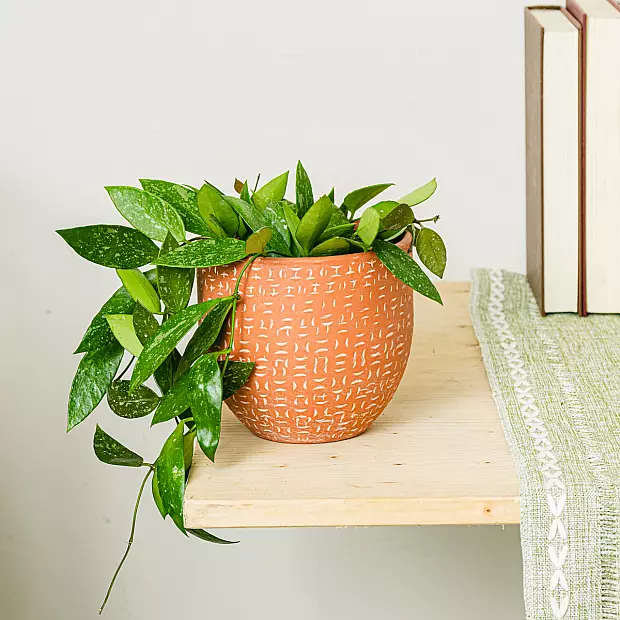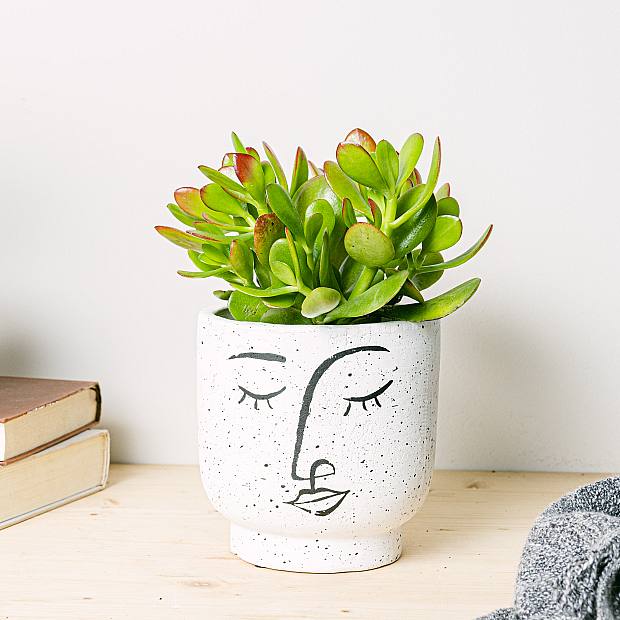Discover the Perfect Succulent Soil Mix Today
Welcome to our expert article on finding the ideal succulent soil mix. The vitality and development of succulent plants heavily rely on the quality of their

Welcome to our expert article on finding the ideal succulent soil mix.
The vitality and development of succulent plants heavily rely on the quality of their soil mix. It is imperative to locate a mix that possesses specific characteristics, such as excellent drainage, a lightweight and coarse texture, and a low water-holding capacity to prevent root rot.
Ordinary potting soil is inadequate for succulents, and certain commercial mixes can be too heavy for indoor succulents.
Stay tuned for valuable insights on crafting the perfect succulent soil mix.
Characteristics of the Best Soil Mix
The best soil mix for succulents should exhibit optimal characteristics for drainage, aeration, and water-holding capacity.
It is important to avoid common mistakes when choosing or creating a succulent soil mix.
One common mistake is using regular potting soil, which holds too much moisture and can lead to root rot.
Another mistake is purchasing commercial succulent mixes that can be too heavy for indoor succulents.
To improve drainage, amendments such as pumice, coco chips, and clay pebbles can be added to the mix.
These amendments help prevent compaction and allow excess water to drain.
When considering purchasing options, succulent mixes can be made at home or bought from local stores or online platforms.

Making your own mix allows for customization and bulk purchasing, while buying a mix saves time and effort.
Amendments for Improving Drainage
To improve drainage in the best succulent soil mix, various amendments can be added to the mix. These amendments include:
Pumice: Pumice is a highly porous volcanic rock that is chunkier than perlite. It provides excellent drainage and aeration for succulents, preventing waterlogged soil and root rot.
Perlite: Perlite is a lightweight mineral that helps improve drainage in succulent soil mixes. It retains some moisture while allowing excess water to drain away, preventing waterlogged conditions.
Clay pebbles: Clay pebbles, also known as expanded clay pellets, are small, lightweight balls of clay that improve drainage and prevent soil compaction. They create air pockets in the soil, allowing roots to breathe and preventing water from pooling.
Coco chips: Coco chips, made from coconut husks, help retain moisture in succulent soil mixes while allowing excess water to drain. They provide a balance between water retention and drainage, keeping the soil moist but not overly wet.
Making Your Own Succulent Mix
When making your own succulent mix, it is important to gather the necessary ingredients and tools.
Making your own mix offers several advantages, including cost-effective alternatives to commercially available options. By purchasing bulk quantities of ingredients, you can ensure a steady supply for an extended period.
Additionally, homemade mix allows for customization and control over the ingredients, ensuring optimal drainage and aeration for your succulents. This approach is particularly beneficial for indoor succulents, as some commercial mixes can be too heavy for them.
Buying a Mix at a Local Store
Continuing the exploration of succulent soil mix options, one convenient avenue to consider is purchasing a mix at a local store. Here are four key points to keep in mind when buying a mix at a local store:

Availability: Local garden centers and home improvement stores like Lowes, Home Depot, and Ace offer a variety of succulent mixes. This makes it easy to find a mix that suits your needs.
Time-saving: Buying a mix saves time and effort in preparing your own. It allows you to start potting your succulents right away.
Brand selection: Various brands like Dr. Earth, EB Stone, Bonsai Jack, and Tanks are available in local stores. Research and choose a brand that is known for its quality and suitability for succulents.
Convenience: Smaller-sized bags are convenient for storage, especially if you have a few succulents. However, if you have a large succulent collection or want to buy in bulk for future use, you may need to inquire if larger quantities are available.
When buying a mix at a local store, consider these factors to ensure you choose the right brand and quantity for your succulents.
Buying Succulent Mix Online
Online platforms offer a wide range of options for buying succulent mix. When purchasing succulent mix online, there are both pros and cons to consider. One advantage is the convenience and access to a wider selection of brands and products. Online platforms like Amazon, Etsy, eBay, and Mountain Crest provide a platform for purchasing succulent mixes from popular brands such as Superfly Bonsai, Cactus Cult, and Hoffmans. However, a disadvantage is the inability to physically examine the product before purchase. To help compare different online brands, the table below provides a brief overview of some popular options:
| Brand | Features |
|---|---|
| Superfly Bonsai | Offers a blend of bonsai soil and pumice for improved drainage |
| Cactus Cult | Specializes in cactus and succulent soil mix |
| Hoffmans | Provides a variety of soil mixes for different plant needs |
It is important to read reviews and recommendations to find the best mix for your indoor succulents when buying online.
Key Considerations for Succulent Mix
Key considerations for the perfect succulent soil mix include ensuring good drainage, a lightweight texture, and proper aeration. Here are four important factors to consider when creating or purchasing a succulent mix:
Organic ingredients: Using organic materials in the soil mix offers several benefits. Organic matter improves the soil structure, enhances moisture retention, and promotes beneficial microbial activity. Organic ingredients such as compost and coconut coir can provide essential nutrients for the succulents.
Avoiding common mistakes: One common mistake to avoid is using regular potting soil, which retains too much moisture and can lead to root rot in succulents. Another mistake is using mixes without drainage holes, which can result in waterlogged soil. Additionally, overwatering is a common mistake that can harm succulents. It is important to allow the soil to dry out between waterings to prevent root rot.
Lightweight texture: Succulent soil mix should have a lightweight texture to facilitate good drainage and prevent compaction. Incorporating materials like pumice, perlite, or coarse sand can help achieve the desired texture.
Proper aeration: A well-aerated soil mix allows oxygen to reach the roots, promoting healthy growth. Adding ingredients like pumice or clay pebbles can improve aeration in the soil.
Experimentation for Finding the Best Mix
How can succulent enthusiasts determine the best soil mix for their plants through experimentation? Conducting experiments allows succulent enthusiasts to find the perfect soil mix that meets the specific needs of their plants. By trying different combinations of ingredients and observing the performance of the succulents, valuable insights can be gained. It is important to consider the benefits of using organic materials in succulent soil mix, such as increased nutrient content and improved moisture retention. However, there are common mistakes to avoid when experimenting with succulent soil mix, such as using regular potting soil or neglecting the importance of good drainage. By keeping track of the different mixtures tested and their outcomes, succulent enthusiasts can refine their approach and achieve optimal results.
| Benefits of Using Organic Materials | Common Mistakes to Avoid |
|---|---|
| - Increased nutrient content | - Using regular potting soil |
| - Improved moisture retention | - Neglecting good drainage |
| - Enhanced soil structure | - Overwatering succulents |
Importance of Proper Succulent Soil Mix
Proper succulent soil mix is crucial for ensuring the health and vitality of succulent plants. The importance of well draining soil for succulents cannot be overstated. To achieve this, selecting the right amendments for succulent soil mix is essential.
Here are four key reasons why a proper succulent soil mix is important:
Prevents root rot: Succulents dislike wet soil and are prone to root rot if kept too wet. A well draining soil mix allows excess water to quickly drain away, preventing waterlogged conditions that can lead to root rot.
Promotes healthy growth: Succulents thrive in soil that is lightweight and chunky. A mix that is not too heavy allows for better aeration and root development, promoting healthy growth.
Prevents water retention: Succulents are adapted to dry environments and do not require much water. A soil mix that does not hold much water helps prevent overwatering and ensures that the roots do not become waterlogged.
Enhances nutrient uptake: A well balanced succulent soil mix provides the necessary nutrients for the plants to thrive. By selecting the right amendments, such as pumice, coco chips, and clay pebbles, the soil mix can improve drainage while also retaining some moisture and enhancing nutrient availability.
In conclusion, the quality of the soil mix is crucial for the health and growth of succulent plants. Finding a mix with good drainage, a lightweight texture, and low water-holding capacity is essential to prevent root rot.
Various amendments such as pumice, coco chips, and clay pebbles can be used to improve drainage. Whether making your own mix, buying from local stores, or purchasing online, experimentation may be necessary to find the best mix for your succulents.
It is important to invest time and effort in creating the ideal soil mix for thriving indoor succulents.